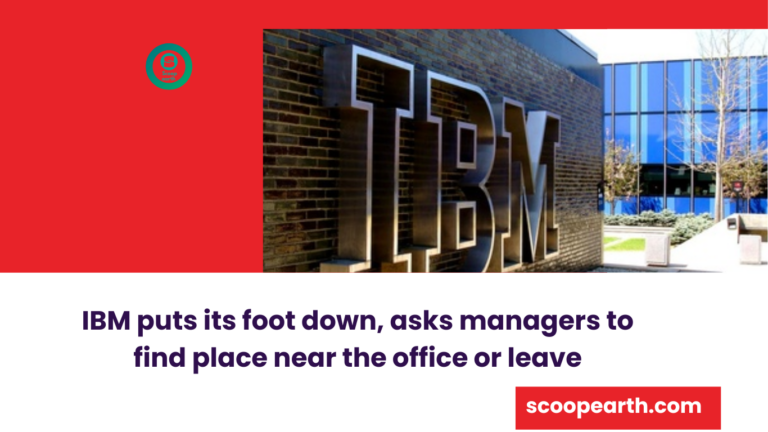Worldwide Business Machines Corp. conveyed a companywide final offer to directors who are as yet working from a distance: move close to an office or leave the organization. All US supervisors should quickly answer to an office or client area something like three days every week, “paying little heed to current work area status,” as indicated by a reminder sent on January 16 by Bloomberg. Identification in information will be utilized to “survey individual presence” and imparted to directors and HR, Senior VP John Granger wrote in the note.
Those working from a distance, other than representatives with exemptions, for example, clinical issues or military help, who don’t live close to the point of driving to an office should migrate almost to an IBM office by the beginning of August, as indicated by the reminder. That, for the most part, implies inside 50 miles (80 kilometers), as indicated by an individual acquainted with the standard who asked not to be recognized talking about corporate strategy.
Supervisors who don’t consent to move and can’t get a job that is supported to be a remote unquestionable necessity “separate from IBM,” Granger composed.
“IBM is centered around giving a workplace that offsets adaptability with the eye-to-eye collaborations that make us more useful, creative, and better ready to serve our clients,” an organization representative said. “Steady with that methodology, we’re requiring leaders and individual chiefs in the US to be in the workplace something like three days out of each week.”
CEO Office Arvind Krishna has long promoted the significance of in-person work. In a May 2023 meeting with Bloomberg, Krishna said that advancements will be more extraordinary for the people who aren’t nearby. A few groups inside IBM had previously initiated office participation prerequisites.
IBM has thinned its tasks to zero in on programming and administrations lately, acquainted new items with exploited interest in man-made reasoning, and stripped its overseen foundation, climate, and wellbeing organizations. Leaders gave an uplifting perspective for 2024 with a final quarter profit last week, sending offers to their greatest day in very nearly four years.
Huge Blue hopes to decrease occupations this year, spending a comparative sum on rebuilding as it did last year when it intended to cut 3,900 specialists, CFO James Kavanaugh said a week ago. Get-back-to-office orders are frequently viewed as fuelling whittling down. IBM had around 2,88,000 laborers worldwide toward the finish of 2022.
The organization has shut down various workplaces since the beginning of the pandemic, possibly confounding the re-visitation of office plans for laborers. That remembers for focal New York State, Southbury, Connecticut, and Iowa. Diminishing its land impression is important for IBM’s continuous edge development endeavors, Kavanaugh said during an income call a week ago. The number of administrators that would be expected to move under the new guidelines couldn’t be resolved.
Many organizations have expanded get-back-to-office prerequisites over the past year, supplanting worker cordial impetuses like cheerful hours and suburbanite endowments with additional corrective measures, including disciplinary activity or restricted professional success if participation targets aren’t met. The tech business specifically has seen fixing rules as the market soured, and the gamble of occupation cuts has steered the result for bosses. Amazon.com Inc. and AT&T Inc. have each arranged for a few telecommuters to move close to workplaces.
Notwithstanding new guidelines, office participation remained genuinely stale all through 2023, as indicated by information from Kastle Frameworks. Across the ten biggest business locale in the US, the number of laborers in the workplace drifted around 50% of what it was before the pandemic, with tech-weighty districts like the San Francisco Narrows Region announcing even lower rates.
Ankit Kataria is an experienced content writer with over 2 years of expertise in crafting insightful articles on startups, trending topics, business, economy, and finance. With a keen eye for detail and a passion for delivering well-researched content, Ankit ensures that his articles are engaging, informative, and valuable to readers. His writing style blends analytical depth with clarity, making complex topics easily understandable for a broad audience.










